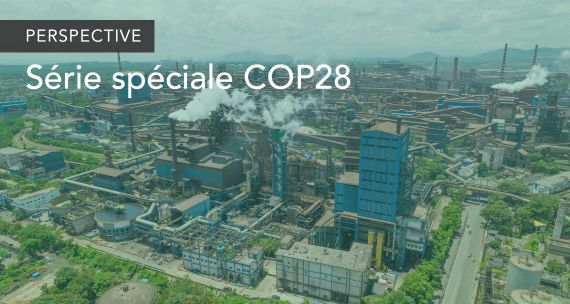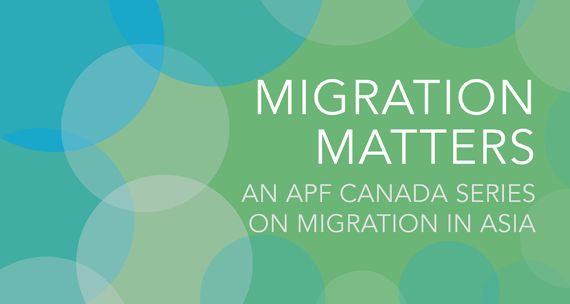As we commit 2016 to the annals of history and usher in a brand new year, APF Canada’s dedicated research team has compiled a list of key stories to watch in Canada-Asia relations, news, and current events in 2017.
And we invite you to cast your own vote for the story you feel will be the most important to the Asia Pacific region in the year ahead with our interactive poll.
From trade and investment, to the environment and security, to politics and technology (and, of course, anticipating U.S. President-elect Donald Trump's impact on Asia Pacific relations), here’s what we’ll be watching in 2017:
1. R.I.P. TPP?
With U.S. protectionism on the rise, the election of Donald Trump has rung a death knell for the Trans-Pacific Partnership (TPP) and left other TPP members scratching their heads over what comes next.
An agreement without the U.S. is not an attractive option. Many are now looking to China as the standard bearer for regional economic integration through potential agreements like RCEP or the collective dream of FTAAP. But is China ready to take up the banner?
For Canada, the path forward is murky. A crucial decision will be whether Ottawa pursues multilateral or bilateral trade agreements in the year ahead. With limited negotiation capacity, the pragmatic strategy is to double down on the agreements in play: bilateral negotiations with Japan and India, exploratory discussions with the Philippines and Thailand, and feasibility studies with China and ASEAN.
Canada has little time to mourn the TPP; urgency in 2017 is required to secure better economic relations in the Asia Pacific.
2. China: Climate Change’s New Champion?
From worst offender to vocal leader, China continued its swift about-face on climate change in 2016.
China and the U.S. are the two biggest emitters of greenhouse gases and have been working together closely in the fight against global warming. That was, until Donald Trump won the presidential election. Trump has denied climate change, once calling it a Chinese hoax, and has said the U.S. will withdraw from the Paris Agreement.
Chinese officials have called out Trump on his beliefs, and sent a clear message that a change in U.S. policy will not affect their commitment to the Paris Agreement.
Will China continue its leadership charge? It would help China gain respect from the international community, address its heavily criticized environmental practices, and possibly find new momentum for its ongoing economic development.
3. Asia’s Growing Refugee Crisis
While the world has been focused on Europe’s refugee crisis, Asia’s continues to worsen. Following a bloody army crackdown in Myanmar that began in October, 21,000 minority Muslim Rohingya have fled from the country’s Rakhine State to the coastal town of Cox’s Bazar in Bangladesh, adding to the thousands of Rohingya already displaced since 2012. Muslims across Asia, from Dhaka and Kuala Lumpur to Jakarta and Bangkok, have protested in support of the refugees. Compounding this dire state of affairs, fighting has also worsened in Myanmar’s Shan State, with refugees fleeing across nearby borders into China.
Millions in the Asia Pacific are also being displaced by climate change. UNHCR reported that in 2015, 85 per cent of people displaced by natural disasters were from South and East Asia. Meanwhile, the rising seas and erosion are forcing people to relocate within the Pacific Islands. In 2016, five islands that were a part of the Solomon Islands disappeared. Unfortunately, the climate refugee count is likely to rise in 2017.
Wealthier nations in Asia, including Japan, South Korea and Australia, need to step it up and do more to find solutions to this growing crisis.
4. The Rainbow Wave Gathers Power in Asia
The rainbow wave is taking off in Asia. Pride festivals are popping up across the continent, with the largest occurring in Taiwan: 82,000 attendees participated in a gathering in Taipei this past year.
Taiwan is looking to keep riding this wave in 2017, with plans afoot to be the first place in Asia to legalize same-sex marriage. Three bills are currently before the legislature legalizing same-sex marriage, offering joint-welfare benefits for same-sex couples, and providing for shared custody of children. If the legislation is passed, Taiwan will serve as a model for inclusive LBGTQ rights in Asia.
Attitudes are also shifting elsewhere on the continent, with 71 per cent of young South Koreans believing “homosexuality should be accepted,” and 83 per cent of young Japanese agreeing with the same statement.
5. The Game of Risk in the Asia Pacific
In recent times, the balance of power in the Asia Pacific has been fairly stable. This may be about to change. Military spending by China, India and Japan is on the rise, with predictions that military spending across the Asia Pacific will increase to US$533 billion annually by 2020. In a related development, Philippines President Duterte has taken steps to distance himself from the country’s traditional ally, the U.S., and instead declared his intentions to strengthen relations with China and Russia. Add to this mix statements and actions taken by President-elect Trump in the last months of 2016 signaling new directions in American policy in the region, and there is good reason to anticipate that 2017 will see some realignment of strategic relations in the Asia Pacific. Only time will tell how much alliances change, but if the U.S. reduces its engagement in the region, bets are on China to happily step up and fill in the void.
6. Asia’s New Super Grid
Energy as we know it could be about to change in the Asia Pacific. This year, a group of executives from across Northeast Asia signed a Memorandum of Understanding to study the feasibility of a massive cross-border power grid. Starting in Northeast Asia, the eventual plan is to expand the infrastructure network to connect with South and Southeast Asia. And if this is not a grandiose enough plan, the signatories also intend to have the grid driven by renewable energy sources and be operational by 2020.
If the political will, financing and regulatory barriers can be overcome, this would be a giant step forward for Asia, indeed the world, in the race for clean technology and sustainable energy.
7. Shaking Up China’s Old Guard
The Communist Party of China (CCP) will hold its 19th National Party Congress (NPC) in the fall of 2017. Several major events are taking place during the NPC, including the election of a new Central Committee, which encompasses the party’s major political organs.
Most of the current Central Committee members are nearing the age of retirement, including five out of the current seven members of the Politburo Standing Committee (PSC) – the party’s top decision-making body. Only one seat is confirmed for the PSC: current General Secretary Xi Jinping is considered a shoe-in for re-election. Since being voted in as head of state during the 18th NPC, the speed in which President Xi has consolidated power has surprised many China observers.
Who will replace retiring members as the country’s top decision-makers alongside Xi is a question with great political and economic implications for China and beyond.
8. Goodbye Cold, Hard Cash?
With electronic commerce (e-commerce) on the rise in major Asian economies, the People’s Bank of China (PBOC) announced this year that it was exploring the benefits of a state-backed digital currency based on Blockchain technology. This “sovereign and stable” digital currency could replace the banned, but still popular among Chinese investors, Bitcoin.
In India, the move towards a cashless society has been more dramatic. Prime Minister Modi’s recent call to demonetize all existing 500-rupee ($20 CDN) and 100-rupee ($10 CDN) notes invalidated 80 per cent of currency in circulation in the country. Since this decree, electronic payments have drastically increased to adjust. While it was met with a public outcry in many quarters, the move has been lauded as a sustainable long-term solution for a population that would otherwise use cash for daily transactions, thereby avoiding taxes and engaging in grey market activities.
Expect these efforts to continue in 2017, particularly in Japan, Indonesia and the Philippines.
9. The War Against Corruption
Over the course of 2016, major corruption scandals made headlines across the Asia Pacific. In Southeast Asia, protesters in the thousands assembled in Kuala Lumpur, Malaysia, to denounce PM Najib Razak’s involvement in a multi-billion dollar corruption scandal. But the long and varied list of corruption charges against South Korean President Park Geun-Hye this year – from religious fanaticism to bribery and improper access to state affairs – made for one of the most atypical scandals in recent history. More than one million citizens took to the streets of Seoul in the final months of 2016 demanding President Park’s resignation or impeachment. And it worked; parliament passed an impeachment motion against Park on December 9, stripping her of her presidential duties pending a constitutional Court ruling that she step down permanently.
These popular protests are not simply the condemnation of corrupt leaders, but part of a greater movement in Asia against corrupt practices in government. In 2017, the aftermath of these scandals may well inspire further populist activities across the region.



